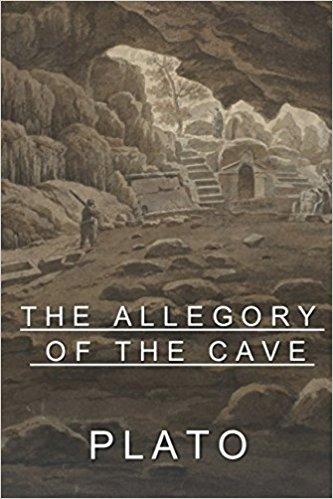




Plato's myth of the cavern, also known as the allegory of the cave, it is not a philosophical myth, but rather a pedagogical allegory, and it is precisely there where the true message of Plato´s allegory is.
This easy and brief book to read has three parts. The first part is where it describes the scenario of the cavern, the wall, the fireplace and the prisoners. The second part narrates the liberation stage, to conclude with the last part that narrates the return to the cavern and the final outcome.
From an early age, we have listened to the essence of "The Myth of Plato's cave", and what we have been told is no more than a graphic representation of a cave where people have been imprisoned from birth. These prisoners are chained so that they are fixed, forcing them to gaze at the wall in front of them and not look around at the cave, each other, or themselves. Behind the prisoners there is a wall and just behind the Wall there is a fire. All arranged in a linear manner and in that exact order. Between the fire and the low wall, unchained people walk carrying objects or puppets of men and other living things. The people walk behind the wall so their bodies do not cast shadows for the prisoners to see, but the objects they carry do. The prisoners cannot see any of what is happening behind them, they are only able to see the shadows cast upon the cave wall in front of them.
Due to the circumstances and the cave itself, the shadows are the only reality for the prisoners because they have never seen anything else from birth; they do not realize that what they see are shadows of objects in front of a fire, much less that these objects are inspired by real things outside the cave. And it is at this stage of Plato´s work, where most people terminate interpreting the myth of Plato's cave because if you had read this book fully, the message that would have been transmitted by word of mouth would have been very different one. Only in such a case, Plato´s play would have been understood as myth rather than an allegory.
The knowledge that is transmitted into society on Plato's myth of the cavern is that "it is not always true everything we see." However, this was not the message that Plato wanted to leave us with…
Still on the subject, the story tells what would have happened if one of these prisoners to be released and brought into the light of the fireplace, contemplating, in this way, a new reality; that is to say what are the shadows. Once the prisoner has taken on this new situation, it is taken out of the cavern, appreciating a new second external reality (trees, forests, rivers, seas, sky, day, night and the sun, among many other things.
The allegory terminates just when the prisoner returns to the interior of the Cavern to "liberate" to his friends, and explain to them how wrong they were about their concept of reality. However, his friends laugh at him claiming that his eyes have been spoiled by now be blinded by the passage of the clarity of the sun to the darkness of the cave. To what his friends asserted: The journey was not worth it. However, when this tries to unchain them and take his friends towards the light and outside the cave, Plato unleashes the following question: Do you think his friends would kill him? And Plato responds: Without a doubt! They will kill him at the first possible opportunity.
This is where the true message of the allegory of Plato's cave resides. It is not a message to alert of “what we see and what we believe”. It is instead a message to all of us to raise awareness that “despite the fact that knowledge of the truth makes us free, the price to pay for such a freedom will always be deadly risky, as long as that knowledge is not shared and accepted by the rest.
Very enlightening the different ideas and reflections that we can take after fully reading the allegory of the cave, and not just remaining with the popular reference. Without a doubt, my favourite reflection is the following: What would be the effect and the consequences of attracting a large pull of very highly talented and employ them on firms mostly managed under archaic managerial styles and rigid chain of commands?
Rate this post:
Master Dual en Emprendimiento en Acción_RETOS
16 Nov 2020International Business Systems
22 Oct 2020Technology and Entrepreneurship
16 Oct 2020Technology and Entrepreneurship
10 May 2019Managing through discontinuities
28 Apr 2021What sort of mouse is your organisation?
25 Jan 2021An evolutionary perspective of innovation
10 Jan 2018The perennial and elongated shadow of Schumpeter
16 May 2017Tensions managing employee innovation behavior
19 Jan 2017Born as an alternative to traditional management “consulting” firms, Brodgar & Mulligan is a boutique management and a advisory firm focused on the practice of challenging established thinking and drive transformation.
Our solutions evolve around our motto ''passionate about seeking the right balance between firm´s developed degree of innovations and the grade of the sophistication of the demand in a particular geographical market''.
